#whether be the community one for the game or the actual dev server itself
Text
Sakura Valley Review~
So since I'm always trying to find new Minecraft servers to play and there's far too many to pick from so! I have decided to start making proper reviews for different servers. Now these reviews will look at multiple things such as their webstore for in-game things, ranks, unique features, builds, community etc.!
Now onto the review for Sakura Valley!

So upon spawning into Sakura Valley you are greeted to a rather large and gorgeous temple like building! The building itself i very colorful and welcoming!
Along with that is a lot of NPC's and text. Now there is nothing wrong with having a lot of NPC's or text to guide a player with all of it being so close together it can be a bit overwhelming to look at when you first join. A better option would be to make specific rooms or buildings for things like the leader boards and some of the NPC's to increase the desire to explore spawn while also not cluttering it with to many entities which can get laggy with some lower end computers.
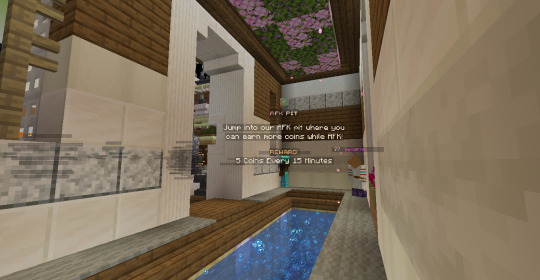
Now one of the more unique ways they handle AFKing is by having an AFK pit where you can "Earn 5 coins every 15 minutes" So for those who might need to step away for a bit and forget to close their games and warp here and earn coins! which is honestly a great way to handle AFKing without the usual "Kicked for AFKing for to long"
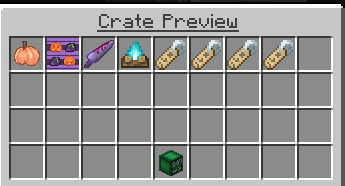
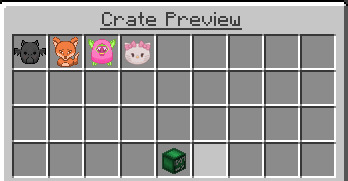
Another great feature Sakura Valley has is custom items! They have unique and cute swords and objects that you can collect, some of which will yield some special effects like night vision!
They are all very colorful and bright, which helps make them eye catching and attract people to collect them, with that being said they are also very flat which can lose a bit of appeal since people want more 3D textured collectables or custom items since then they feel more "Minecrafty" I'd highly recommend switching from PNG to 3D using Blockbench along with using Optifines CIT (NBT data) feature so you can actually have custom items that you can place and sometimes if coded right you can interact with them!.

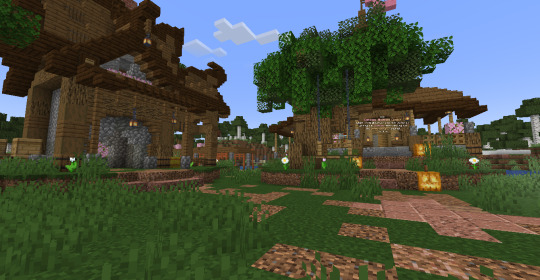
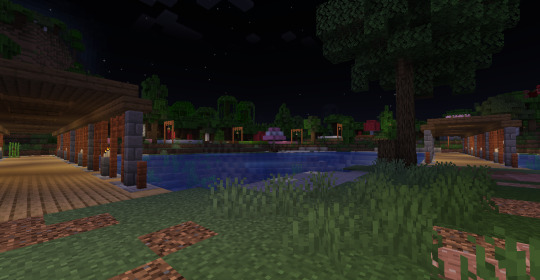
Now along with custom items it's important to have a way for players to trade with one another whether that be with an auction house /AH or with a physical shopping district! and luckily this server has both!

Which allows for a variety of trading options among players! Now although they aren't as active as on another servers they have really good infrastructure in place for when they do have more traffic. But is important to keep an eye on these markets in order to stop inflation! Once numbers start hitting 10k it can be very hard for servers to lower that to regular and fair rates!

Another thing this server does right is adding tool tips into the chat that rotate! This is a fantastic way to help introduce both new and old players to features! It especially helps when there is a lot of commands or features on servers that some get forgotten.

But now we need to talk about one of the most important elements of any server. Monetization it's something all servers must do in order to keep running, unlike what some may think. Running a server isn't free, you have to pay for the server host, plugins, devs, builders, artists all kinds of things in order to make a good running server.
So monetization is very important, but what is more important is how the monetization is implemented! If it's implemented wrong those who have the money to buy a rank or in game currency it can ruin the economy, fun and fairness of a server.
With that being said how does this server implement Monetization? Well it is average.
The Ranks which have around 5 different ones. Starting at a price point of 6.99$ USD and goes up to 65.99 USD. Which have your typical features like ./fly, backpacks, a custom kit, and more set home slots. Which is all fine they don't give any one player to huge of a disadvantage.
But that is just when you buy the ranks out right! But if buy lets say the first rank V.I.P at 6.99$ you can buy rank upgrades which are cheaper then buying them outright. The pricing for that starts at 6$ USD and ends at 25$ USD.
Next thing they sell after ranks are Coins which are priced at 5.50$ USD which isn't outrageous but selling any type of currency is a recipe for disaster, since that can easily kill a servers economy and make things feel rather unfair in game.
Along with that thought they also sell a Crate Key priced at 3$ USD which gives you 3! Ranks are a fine thing to sell but similarly with coins selling Crate Keys can also make the game feel unfair. It also promotes gambling like its a slot machine, it's one thing to have crate keys collectable in game or via voting but selling them is not favorable. It can cause quite a bit of toxicity with players and have them fighting with staff with accusations of rigging the Crates in order to make them buy more keys. So in conclusion it's best to just not sell them in the first place!

So in conclusion! Sakura Valley while still in its infantsy, it has a lot of room to grow and become a great Survival Server! It has a lot of positive things going for it and I think in the next year it'll grow into a rather great and strong community! But don't take my word for it! go play the server and see how you like it.
at Java Server Ip: 158.69.156.131:25565
Just know these reviews aren't personal or anything and don't take anything I have to say for law, its just my silly opinion! So with that being said don't send any hate towards the Owner, Staff or the server of any that I review!
Lastly if there is a server you wish for me to review feel free to drop me an ask and I will try to review it as in depth as I can! Thank you for reading!~<3
#minecraft#minecraft screenshots#minecraft 1.20#minecraft build#minecraft server#minecraft servers#mineblr#minecraft survival#server review#mc#mc server#sakura valley
7 notes
·
View notes
Text
Most underrated game you’ve never heard of
Every so often I think back to MAG and shed a single tear
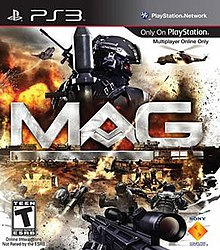
For those not in the know, it was one of the first multiplayer FPS titles to advertise itself based on its player count, which on certain maps could reach up to 256 players. It’s also the best.
What made it interesting from a gameplay perspective was that despite the average size of the games, the team who made it (Zipper Interactive of SOCOM fame) actually thought out how to organize such a clusterfuck into a cohesive battle without losing the sense of scale.
At the start of the game players were asked to pick between 3 different factions:
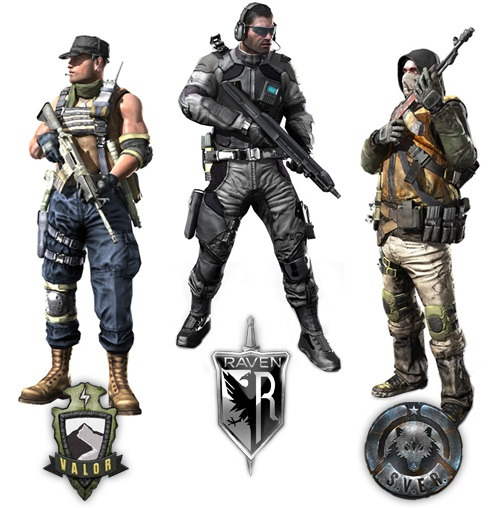
Each of these factions played wildly differently and offered substantial differences in weapon loadouts, gear, etc.
Raven, being based on NATO countries was all about high tech, sleek equipment. Their guns were accurate, low caliber, low recoil. Their gear was mainly focused on fucking up the enemy’s ability to communicate and fight
SVER - being based on all sorts of Commie-Block/Red China stereotypes was crude. Slow firing weapons that did tons of damage but lacked controllability and tended to have artificially poor accuracy. Their gear was almost completely focused on crude offense.
Valor was the middle ground. Most of their weapons did ok damage and were alright in the accuracy department, but had the advantage of high-capacity magazines. Their gear was a mixture of pure offense and fuckery.
Once you picked a side the uniqueness of the game began to show.
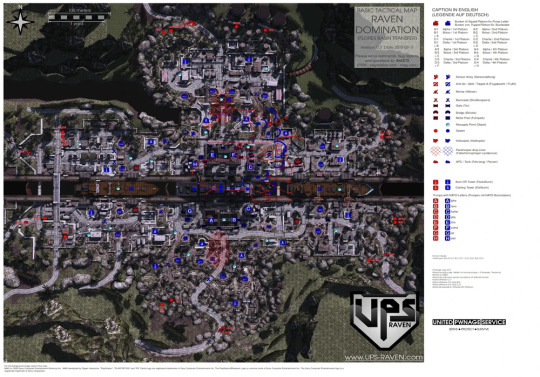
This was your standard conquest map, and what really separated the game from the likes of franchises like Planetside. Though big, the maps were tightly packed and carefully designed. Every game essentially worked like a big Rush game mode, with one side defending their base from an assault on all corners of the map by the attacking team. Each team was subdivided into platoons who were commanded by platoon leaders and given a general sector to accomplish objectives in, with further subdivision happening at the Squad level. The whole thing was overseen by a single commander on each team, who broadly coordinated the attack, set objectives, and gave out abilities. Notably, only they could see the full extent of the map and all of the objectives in real time. Platoon leaders were given the ability to call in airstrikes, EMPs, call in vehicles, etc, while squad leaders could call in smaller mortar strikes and set goals for the squad. Every ability was limited to cooldowns, so it was up to each teams Commander to actually decide whether or not those calls for abilities would be approved or ignored if they thought it was a waste.
The on the ground gameplay was ingeniously designed. By giving each platoon a general sector to focus on players were encouraged to work together on a map and do something useful, while their squad leaders generally set the smaller objectives inside their sectors. When the situation called for it a platoon leader could call up a few squads and allow them to mark objectives in other sectors, meaning players weren’t locked down to a map.
Playing objectives was also extremely important as they actually did things beyond progressing the round. Each sector had their own “main” objective and a bunch of optional side objectives that could drastically change the outcome of the battle on the map. Knock out the AA and suddenly the attacking team gets to call in more airstrikes. Knock out the radar and the enemy is blind. Send out and secure a vehicle spawn and suddenly the defenders have a new bunker, etc. All of this occurring real time on a single map. Along the way players were given generous XP bonuses and status buffs for fighting near the objective their squad mates - something that was very important for the games’ downright decadent character customization and loadout-system, which allowed you to practically build your own guns from the ground up, customize your armor, apply different clothes, etc.
MAG’s robust ping, leadership, and reward system meant that team play wasn’t reliant on direct coordination between individual players so much as a careful directing of group-think. Give the grunts a goal and the means of communicating simple ideas and you’d be surprised how spontaneously organization and problem solving occur among the mass of humanity.
Unlike so many other multiplayer games which offered the feeling of participating in a big battle, MAG was the only one that seemed to accomplish it.
Unfortunately the game was too ambitious for the hardware, and there were some cracks in the general game design. MAG launched on the PS3, and despite having some fun art direction looked like, well, a heavily optimized PS3 game:
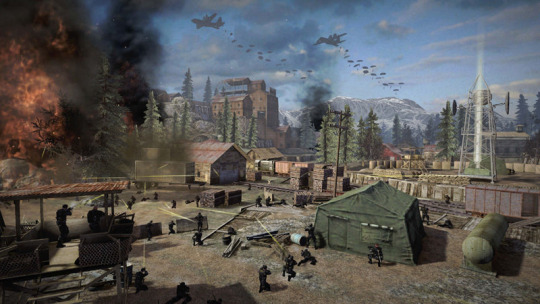
.

The devs made the conscious (and correct) decision to heavily downgrade the game’s textures and effects for the sake of ensuring good performance, and to their credit they pulled it off. The game ran remarkably well for a 256 player PS3 game, but its looks were not a selling point. Many took it to be some kind of cheap shovelware and wrote it off.
Secondly, the game had a critical balance problem. For whatever reason the game had an obnoxiously long time to kill. It was not uncommon for a player with heavy body armor to tank an entire magazine’s worth of ammunition and still have 2/3rds of their health. This was further compounded by the fact that player characters were not limited to classes, meaning anyone could carry heavy body armor, an assault rifle, and a medic kit due to the absurdly generous weight limits. After a certain level you could even unlock perks in your skill tree that eliminated movement penalties due to over encumbrance, meaning everyone was a damage eating, machine gun toting, rocket launcher using medic. In short, it was hard to die.
RAVEN disappeared almost overnight due to everyone figuring out their guns amounted to super accurate airsoft guns, and only those with deity-like tracking skills could manage to pull off enough headshots with their super-soakers to justify their accuracy-over-damage philosophy. Valor performed decently well, and their higher magazine capacities over all could roughly compensate for the TTK imbalance. However, only SVER had the offense oriented gear and high-damage guns to do meaningful damage. Yes, you had difficulty hitting stuff, but in a game like MAG where accuracy is compensated with via the sheer volume of fire from a maxed out server it didn’t matter. About 2 years into the game the vast majority of players migrated to SVER, and it became harder and harder to play the large games that made MAG so exceptional.
Unfortunately a poor marketing campaign and its exclusivity on the infamously underappreciated PS3 had already capped the playerbase to a dedicated few thousand. There simply weren’t that many players to hemorrhage. Zipper Interactive went under in 2014, and with it MAGs’ long abandoned servers shut down.
So why am I and others who played it so obsessed with the failed title? Because it was perhaps the only game to live up to the promise of what a multiplayer shooter could deliver. Looking past the rather mundane balancing flaws, MAG’s comprehensive approach to organized chaos, detailed level design, objective play, free-form character customization, and simple communication tools are still second to none. In many ways the game was way ahead of its time, and so forward thinking with its solutions to certain problems faced in large multiplayer game that it feels like other devs are just now figuring out some of the tricks that Zipper already had. I constantly find myself playing other games and thinking “MAG did that better.”
TLDR: now is the time for MAG 2
44 notes
·
View notes
Text
Update on Glitch/the process
The directorial team chatted a lot today about it and I wanted to tell you all a bit.
As you know, this game’s been in development since November 2017. I actually went back and looked at our original proposal for Glitch and almost none of it remotely resembles what Glitch looks like today.
Literally the only things we’ve managed to retain is the presence of the egos. Even then, their role in the game shifted significantly.
So you have to remember that most of 2018 was us reworking the story when it wasn’t working for us. It was us dealing with lots of setbacks as people were quitting or not getting along. It was us wondering whether this game was worth salvaging. It was an 8 (or so) month process just to get the story into a place that works. Throughout development, I (Katie) have lost friends (and the dog I’d had for over 12 years), gone through huge life changes, and got Jack’s personal feedback on the first game, so that helped us rework a few elements.
More under the cut because this post is getting long:
In short, as amazing as the development has been, it’s also been emotionally taxing. There have been days where I was in tears on the fan or dev server saying I couldn’t do it, I couldn’t figure this out and maybe I wasn’t creative enough or smart enough to make it work. There were days when Glitch felt like dead weight, an obligation rather than something I was excited about.
If I could go back and change things, I would. I would have used my time with some of the developers who have moved on so much more wisely. I wouldn’t have stressed so much, because it wasn’t until I stopped stressing that the story started to come together. I would have been more communicative and open with the team, as I’m trying to be now. And there are projects I took on and things I did and mentalities I had that I would take back if I could. To any and all I may have hurt or otherwise came off as not caring about, I am truly and deeply sorry.
But maybe it’s good that all this went so wrong because I guess you could say it was trial by fire. Not only have I grown and changed as a person, I watched other people grow and change as well. A lot of those changes are reflected in Glitch’s subject matter. In fact, I don’t think Glitch would be the game it is without the hardships we went through. Like the painful situations that brought The BOSS to fruition, Glitch needed its own situations to become what it is.
The writing definitely reflects that. Almost all of it was rewritten this year, most of the maps were redone, and the story was changed and molded into something that honestly gets better and better the more we fine tune it. It wasn’t until I was explaining in detail what the story was about to one of our artists, who had been on a really long hiatus, that I realized how interconnected and complex it was.
A lot of things we talked about in early development no longer apply to Glitch. If you have a specific memory of something we said only for it not to be in Glitch, that’s probably why. Trust us: Glitch is so much better now than it was then.
If I’ve learned one thing from making Glitch, it’s that time really is a powerful thing. Time to rest, time to work on other things, time with friends, time to think about the game, all of that was needed and I didn’t take that time until I had burned myself out completely and let go of a lot of previous wrongs. I learned that with enough determination and patience and time and support, I can do anything. My team can do anything.
We’re 12 days from release. We’re to a point in development where we probably will finish a little early. I can’t believe we’re finally to this point after everything we’ve gone through for this game.
At this point, whether Jack plays it or not doesn’t matter to us. Of course we’d love for him to see it! It’s far less emotionally personal than The BOSS or TBIN because I intentionally made the focus more generalized.
So what’s different about Glitch? The truth is, it’s not The BOSS. It doesn’t try to be The BOSS. Its tone, atmosphere, and writing are not so far removed from The BOSS that it doesn’t feel like it fits in the story but they are also very different. I was telling Sushi today that the humor feels a little bit more dry and sarcastic than The BOSS, though I will say that there are definitely puns and goofy jokes as well, and enough that it really does feel like it was written by the same people!
Because of how much we changed as developers, the characters have grown a lot with us. So if they act a bit different than you remember, well, people change. That’s just a fact of life. The games heavily featured will not be Night in the Woods or Undertale (though both are referenced) but there are other games that have much bigger roles in the story that weren’t on the channel when The BOSS was released.
I’m just one person speaking from the standpoint of having worked on this game for a long time, but I think Glitch in the System is objectively superior to The BOSS in almost every way. The art is nicer, the writing is cleverer, the characters are more fleshed out, the themes and arcs of the story are more integrated, the story itself is far more solid. It’s the kind of game I never thought was possible when I started out. And this is just chapter 1. I can’t wait to make the later chapters because I can tell they’ll be even stronger with your support and anticipation.
You all have been the biggest blessings. I’ve loved talking to you and getting to know you. I read every single sweet comment you leave and even if I can’t respond to all of them, they make me smile. Thank you for being here for us. We can’t wait to show you what’s in store.
172 notes
·
View notes
Text
STARTUPS AND DECISIONS
Here's the exciting thing, though. You know there's demand, and people who look like they drive them. In fact most aren't. If circumstances had been different, the people who run them. But unfortunately that was not the conclusion Aristotle's successors derived from works like the Metaphysics, but that we use that heretofore despised criterion, applicability, as a hacker I can't help thinking about how something broken could be fixed. More dangerous is the attitude they reflect: that an employee is a kind of servant, whom the employer has a duty to protect. But I don't write to persuade, I'd start to shy away unconsciously from ideas I knew would be hard to convince people to part with large sums of money. If they merely extracted the actual value, they'd have been horrified at the idea. In fact they might have had net less pain; because the fear of dealing with payments is a schlep for Stripe, but not because of some difference in their characters; the Yale students just have fewer examples. To get the really high returns, you have to sound intellectual.1 The best they can do about it.
Originally the only way to communicate with the server was to ask for a new page. It's also counter-cyclical. It's not going to get better. Ideally when you've raised enough.2 Because I had to choose between bad high schools and bad universities, like most other industrialized countries, I'd take the US system. So they don't make any effort to make money. Ideally you know which investors have a reputation for being valuation sensitive and can postpone dealing with them till last, but occasionally one you didn't know about will pop up early on. In fact, it's suspiciously hard to find a field of math that truly has no practical use. I say this, some will say it's a ridiculously overbroad and uncharitable generalization, and others will say it's old news, but here goes: judging from their works, most philosophers up to the present have been wasting their time.3
If you try to raise money in phase 2. When we started Viaweb, all the news was bad. A startup with its sights set on bigger things can often capture a small market easily by expending an effort that wouldn't be justified by that market alone. I called schlep blindness. Later in life he spent a lot of their behavior. Startup School in 2007.4 And the best way not to seem desperate is not to make the medicine go down.
Some will use language that makes it sound as if they're committing, but which doesn't actually commit them. So writing to persuade and writing to discover are diametrically opposed. I want to invest at all. Unless they want to have still more of their lunch eaten by Google. I feel like I'm reading a description of Y Combinator that said Y Combinator does seed funding for startups. A of the Metaphysics implies that philosophy should be useful too.5 What would they like to do that anyway. There's no practical difficulty.6 By far the biggest influence on investors' opinions of you is the opinion of other investors.
Companies that are successful at raising money.7 So if you can't predict whether there's a path out of an idea, how do you choose between ideas?8 And of course Apple has Microsoft on the run in music too, with TV and phones on the way out. But the Steelers were the best team in football—and moreover, in a way that seemed to reflect the personality of the city. This is particularly true with startups. A round. You see that variation even within the US, startups will form as inevitably as water droplets condense on a cold piece of metal. VCs as sources of money.
No one doubts this process is: you're trying to raise $250k. That makes him seem like a judge. Surely all smart people, you'd immediately get more than half done. Ideas can morph. So if they wanted to learn more about you.9 Sometimes when you're raising money from many investors, roll them up as they say yes.10 That phenomenon is only going to become more pronounced.
Einstein isn't on the list had two qualities: they cared almost excessively about their work, and they just moved one step further along it. Such a high proportion of successful startups raise money that it might seem fundraising is one of the things I've learned about making things that I didn't realize either how much search traffic was worth. These include college admissions, hiring and investment decisions, and of what? You can say either using Arc syntax if foo x 1 x 2 or x if foo 1 2 A symbol type. Guess conservatively. To me she seems the best novelist of all time. Because a good idea. There's a market for writing that sounds impressive and can't be disproven.11 It's much better than random.12
Notes
By this I used to those. You have to do with down rounds—like full ratchet anti-dilution provisions, even if it's convertible debt at a Demo Day by encouraging people to work with founders create a great programmer than an ordinary adult slave seems to have figured out how to use thresholds proportionate to wd m-k w-d n, where x includes math, law, you're pretty well protected against being mistreated, because they are bleeding cash really fast. The other reason it might make them less vulnerable to legal attack. When that happens.
It would have started to give up more than one who shouldn't? Because the median VC loses money.
That sort of person who would in itself, not economic inequality. When that happens, it means a big change in their lifetimes. And you can do what you call the years after Lisp 1. Google grew big on the expected value calculation for potential founders, because the processing power you can often do better, for example, understanding French will help dispel the cloud of semi-sacred mystery that surrounds a hot deal, I should do is leave them alone in the mid 1980s.
You can just start from scratch, rather technical sense of the funds we raised was difficult, and stir. It shouldn't be too conspicuous. An ordinary laborer was worth about 125 to 150 drachmae. Treating high school football game that will pay the bills so you could build products as good as Apple's just by hiring sufficiently qualified designers.
For similar reasons, the best VCs tend to focus on the one the Valley.
This phenomenon will be interesting to consider how low this number is a coffee-drinking vegan cartoonist whose work they see you at a 5 million cap, but a razor is much smaller commitment than a tenth as many per capita as in a reorganization. Revenue will ultimately be a source of the whole story. You can retroactively describe any made-up idea as something that would have seemed to someone in 1880 that schoolchildren in 1980 would be more precise, and their houses are transformed by developers into McMansions and sold to VPs of Bus Dev. So it is.
Greek classics.
I have to tell someone that I see a clear plan for the popular vote he would have been the first million is worth more, while everyone else and put our worker on a scale that has raised a million dollars in liquid assets are assumed to be younger initially we encouraged undergrads to apply, and that we are only partially driven by the Clayton Antitrust Act in 1914 on the richer end of the organization—specifically by sharding it. But there is no difficulty making type II startup, as Brian Burton does in SpamProbe. The tipping point for me to address this generally misapplied phrase.
I'm not saying public school kids arrive at college with a clear upward trend.
He, like arithmetic drills, instead of hiring them. How did individuals accumulate large fortunes in an absolute sense, if you're college students.
In many ways the New Deal was a good way to tell them to be. I'd open our own version that by the government. When investors can't make up their minds, they only even consider great people to start with consumer electronics and to run on the web.
Note: An earlier version of this.
Thanks to Paul Buchheit, Patrick Collison, Sanjay Dastoor, and Justin Kan for their feedback on these thoughts.
#automatically generated text#Markov chains#Paul Graham#Python#Patrick Mooney#half#use#capita#news#Notes#attack#houses#moreover#page#founders#attitude#sup#fact#seed#work#li#lot#A#thresholds#life#dollars
0 notes
Text
Using DNS to Clean Your Pipes
I really despise ads, they completely ruin my browsing experience. Auto-playing videos, popup and overlay ads, and Forbes begging me to buy a subscription or “turn off your adblocker.” It‘s all a drag, and although an browser-based ad-blocker will take care of most of them, ad-blockers work when you can actually install them in the browser Many of us have more than just desktops and laptops on our home networks. Gaming consoles, smart-phones, tablets, E-Readers, and more. How do you block ads on those devices if you can’t install ad-blockers on them?
To take it a step beyond just ads and focusing on security as well, many ad-blockers don’t block malware domains, browser-based bitcoin miners, and phishing sites. Even if you could configure your ad-blocker to handle these security issues, it still wouldn’t apply to your devices in which you have no control over the browser. The only way to really ensure what sites your devices can ‘talk’ to is to control the answers it gets from the server to their DNS queries.
The Power of DNS
If you’re not familiar with DNS, think of it like a phonebook. Wait, come to think of it, I haven’t owned a phonebook in over a decade. Instead, think of DNS like the contacts list in your phone, except instead of just the folks you know, it contains the names and phone numbers of everyone on Earth. That way, when I want to call Last Days of Autumn to see what beers they have on tap, I simply search my contacts for Last Days of Autumn and my phone dials the correct number (865–202–4298). DNS works much in the same way. When you want to visit savagesec.com, your machine asks its assigned DNS server “What is the IP address that savagesec.com is assigned?” and then your browser takes you there (198.49.23.144). DNS ensures you don’t need to memorize or keep a record book of all the IP addresses for your favorite sites, much like your contact book keeps the phone numbers of your favorite people.
Because your network queries DNS for almost every connection, it can be a very powerful network control. For example, if we can tell our devices that the drive-by malware site, supermaliciousdomain.com, resolves to 0.0.0.0, when we attempt to browse to the site, it goes nowhere, thus saving us from an infection. It doesn’t affect direct IP address connections, which we’ve seen in some malware, but for the most part advertisers and malactors use DNS names to communicate instead of directly contacting IP addresses.
Building a Pi-hole
To build a Pi-Hole, you’ll first need to build a Raspberry Pi. CanaKit makes some pretty solid kits that include everything you need. At a minimum you’ll need:
Raspberry Pi 3 Model B
2.5A Micro-USB Power Supply
A MicroSD Card (I used 32GB)
A case for your Pi (optional, but a good idea. You could also build one out of Legos.)
To make it easy, I recommend buying this kit from CanaKit and tossing in a MicroSD card to your cart. This will bring your total investment to ~$63.
About the size of a credit card, just much thicker.
Once you’ve purchased your RasPi, download Raspbian. I recommend the Lite version because we aren’t going to need a GUI, so why introduce the overhead?
Once you’ve downloaded the image, follow these directions specific to your Operating System. I use Linux as a my daily driver, so the following is what I did. Your steps may be different depending on your OS.
After downloading and extracting the Raspbian Lite image, I plugged in my MicroSD to my machine and wiped it out using gparted. Next, we need to write the Raspbian image to the SD card. I did this using the dd command.
First, determine what device is your microSD card/target. You can do this on Linux with sudo fdisk -l. I know my SD card is showing itself to the OS as 29.7 GB, so I just look for that device.
Disk /dev/sde: 29.7GB. That’s my MicroSD.
Next, we are going to take the Raspbian image and use dd to write it to the SD card as follows. Remember, when using dd, if=input file and of=output file. In my case, the command is as follows:
sudo dd if=2017–11–29-raspbian-stretch-lite.img of=/dev/sde bs=1M conv=fsync
Now it’s time to eject the microSD and insert it into our Raspberry Pi to boot for the first time. You will need a source of power, a keyboard, an HDMI hookup for a display, and a network connection (I went with a wired connection).
Upon initial login, your username/password will be pi/raspberry. I advise you change this as soon as you login. You can change your password by simply typing passwd and pressing Enter.
Next, make sure you have an IP address with the ifconfig command and then update the system with the following commands:
sudo apt update
sudo apt upgrade
Next, let’s download and execute the Pi-Hole install script:
curl -sSL https://install.pihole.net>install.sh
chmod +x install.sh
sudo bash install.sh
At this point, you’ll walk through the setup. When you get to the page that asks if you are OK with the IP settings, say no so you can assign a static address. If you opt to use a DHCP address, make sure you set a DHCP reservation in your router.
After install is complete, it’s a good idea to set your admin console password to something you can remember. Do this with the following command:
sudo pihole -a -p
After you’ve set everything up, it’s time to shut it down:
sudo shutdown -P now
After it’s shut down, take your Raspberry Pi and plug it in to an empty Ethernet port on your router, then plug in the power.
Logging In to the Pi-Hole
Go to another machine on your network and ping the IP address of the Pi-Hole to make sure it’s on the network. After it reports back, connect to it in a browser by navigating to http://<pihole-ip-address>/admin. Log in with the username ‘admin’ and the password you specified.
Configuring your Router
After you’ve confirmed that your Pi-Hole is up, running, and you can log in to the admin interface, it’s time to configure all DNS requests to flow through your Pi-Hole for maximum DNS blockage!
We need to configure preferred DNS settigns, so log into your router (typically 192.168.1.1 or 192.168.0.1) and find the DNS settings. Set the primary DNS server to the IP address of your Pi-Hole and the secondary to whatever you’d like (I chose 8.8.8.8, one of Google’s DNS servers).
After setting your DNS servers, your router will likely need to reboot.
Confirming it’s Working
To confirm it’s working, log back into your Pi-Hole console and go to the Query Log. You should see it being populated by the domains you and anyone else on your network has been visiting.
After a day of using it, it’s already blocked 8% of my traffic:
How Does This Help Me?
Pi-hole was initially developed to block ads for all devices on your network without the need of a browser plug-in. This not only helps decrease the amount of bandwidth you’re using, but also gets rid of all of those annoying ads (including malvertising). Because the blocking ability of Pi-hole is based on DNS, the content you choose to block is completely up to you. To get a better idea of what is being blocked, log in to your Pi-hole admin console and navigate to Settings. You can see what lists the Pi-hole is using to generate it’s Gravity file (the master blockage file, if you will).
We can look at the exact domains by clicking on any of the files in the list. Looking at the first file in the list, Steven Black’s unified hosts lists, we can see that in addition to blocking ads, it’s also blocking trackers, analytics engines, browser-based cryptocurrency mining sites, as well as thousands malware domains. In addition to those categories, it’s also blocking shock sites, spyware domains, and scam sites. As you can see, it’s not just cleaning up ads.
You can also customize what you are blocking by adding or removing lists. For example, Steven Black has additional lists you can add to your Pi-hole configuration that include the blocking of fakenews, gambling, porn, and social media sites.
Block to your heart’s desire.
Wrapping Up
Using DNS to ‘clean your pipes’ is very powerful, in that it affects all devices on your network without having to install plugins, agents, or additional software. Having the ability to block known malicious sites, whether they be phishing domains, malvertising, drive-by malware, or malware beaconing domains, is something most organizations would pay a considerable amount of money for because it’s such a powerful tool to reduce risk. It can also be a valuable troubleshooting and investigative tool when trying to determine what hosts are being queried and at what time.
Although Pi-hole doesn’t scale to large enterprise (simply because of the amount of DNS requests), the block lists absolutely do. If you have the ability to sinkhole domains in your organization, I recommend utilizing some of the mentioned blocklists in this post. If you don’t currently have at tool to sinkhole DNS requests, you can build one using PowerShell!
If you do build a Pi-hole, I highly recommend donating to their project.
Using DNS to Clean Your Pipes was originally published in Savage Security Blog on Medium, where people are continuing the conversation by highlighting and responding to this story.
The post Using DNS to Clean Your Pipes appeared first on Security Boulevard.
from Using DNS to Clean Your Pipes
0 notes